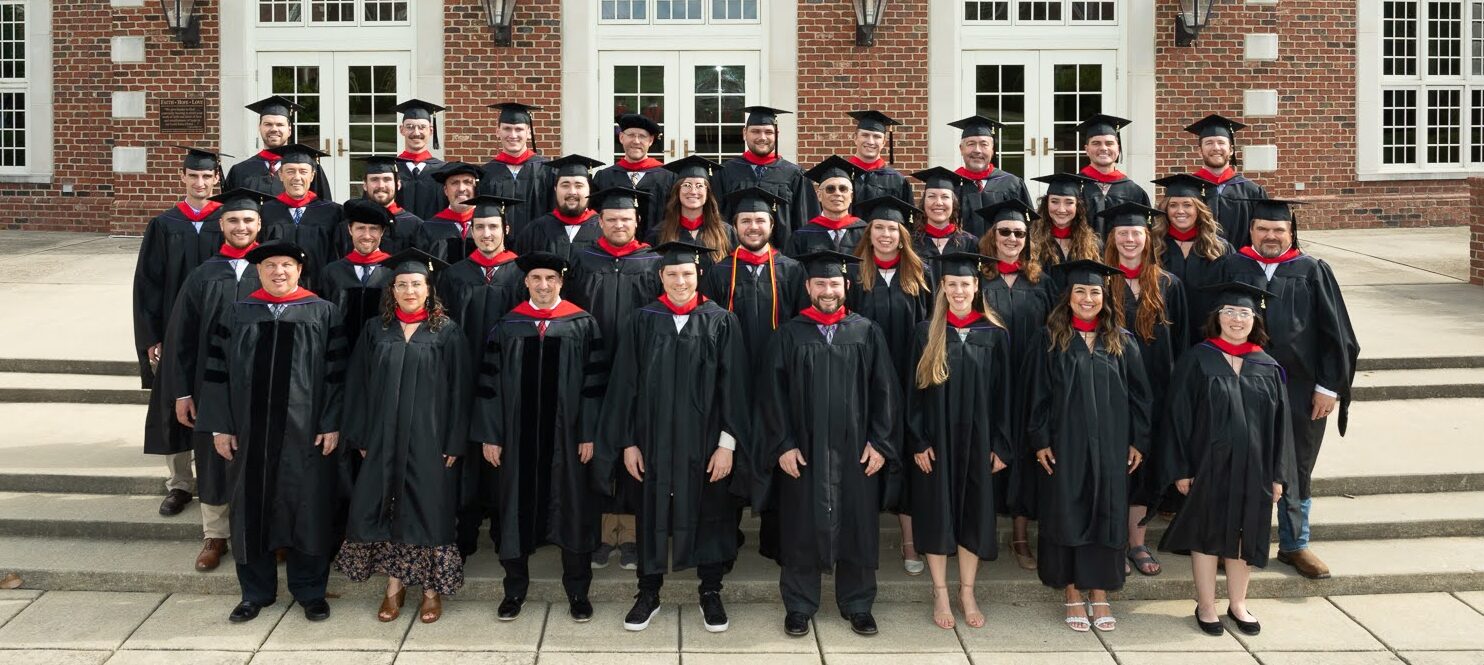In March and April of 2020, many states enacted stay at home orders for their populations as COVID-19 spread through the United States. The abrupt changes and ensuing confusion stressed many institutions to the breaking point. Movie theaters closed, restaurants scrambled to develop online platforms, teachers taught from their living rooms, Zoom became a household name, and nearly every retail store launched contactless pickup options. Some companies collapsed while others found themselves rapidly driven into new models that worked surprisingly well.
As life has returned to a level of pre-pandemic normalcy, many must now consider how to combine their pre-pandemic models with what they learned during COVID. The world has shifted in many significant ways over the last few years and many trends seem to be here to stay. These changes will continue to dramatically impact significant areas of life, and companies and institutions must again answer the question of how they will navigate the times. While this question can considered in every sector of society, in no area of life will the answers have more significant an impact than in the local church.
Part 1 of this article will address Technology and Church Trends that must be considered by church leaders looking to wisely navigate the times. Part 2 will address the biblical principles to be considered as churches work to think biblically and live wisely in the present day.
Technology Trends
As the winter of 2022 began, students in New York City’s public school system were notified that snow days would be a thing of the past. Gone was the excitement of an unexpected free weekday spent sleeping in, building a snow fort, and defrosting icy fingers with a steamy cup of hot chocolate. Though the weather may keep students and teachers from coming to the school building, the remote-learning technology utilized during the pandemic would be reactivated in the event of a snow storm and the educational schedule could continue as “normal.” Pandemic-era technological innovations have not only changed how schools approach blizzards, but have also shifted the attitude of many companies regarding their workforce model.
Industries that never imagined their employees could work remotely were forced to reconsider when the pandemic hit. In many instances, employers found remote options worked better than anyone could have imagined. Overhead costs were decreased (due to reduced travel and facilities costs) and surveys indicate employee productivity increased.[1] Employee satisfaction went up as home-based workers reported lower stress levels and an improved work-life balance.[2] As pandemic regulations disappear, many employees still work from home and many companies expect this to become the new norm. In April 2022, Entrepreneur wrote, “COVID is going down, but hybrid work is going up and will be around for a long time.”[3] Time recently reported that “roughly 55% of US workers are fully in person, 30% are in hybrid arrangements, and the rest are fully remote.”[4] COVID-based technological changes are not the only trends to be considered. Many technological experts are anticipating the rise of a digital universe (metaverse) in the coming years that aims to dramatically impact every area of life.
On October 28, 2021, Mark Zuckerberg announced that his company, Facebook Inc., would change its name to Meta Platforms Inc. to pursue their vision to “help bring the metaverse to life.”[5] For those unfamiliar with the concept of the metaverse, “Put simply, a metaverse is a collective digital experience that can be shared by multiple individuals at once. A big 3D virtual environment. While that definition might seem simple, the potential is off the charts.”[6] Imagine a digital world in which a person can, without ever removing their VR (virtual reality) headset or launching a new program, attend a virtual work meeting, buy a new pair of digital Nike shoes for their digital avatar, own digital property, go to a concert, attend a sporting event, play their favorite video game, form an international band, and spend time hanging out with their friends from all over the world. This parallel digital universe offers nearly limitless potential, and Meta is fully invested in its development.
Although the idea of a digital world may seem to be the things of science fiction, Meta Platforms is not the only major company investing heavily in the future of this digital world. Microsoft is working on virtual meeting rooms to enhance remote coworkers’ relationships, Epic games finished a $1 billion fundraising round “to Support Epic’s Long-Term Vision for the Metaverse,”[7] and in December of 2021 NIKE acquired RTFKT to help expand their offering of digital clothing and shoes in the digital world.[8] While the future of the metaverse remains unclear, technological trends and advances will continue to dramatically impact nearly every area of life. Men and women, young and old, will work, play, study, and recreate from the comfort and convenience of home.
What do these technological trends mean for the church? Simply put, the pressure on churches to expand their “digital church” offerings will continue long past COVID-19 regulations. As the world continues to adopt and embrace various technological platforms, men and women who work, shop, and chat with friends from the convenience of a home internet connection will expect the local church to keep up with the times. As the metaverse expands and grows in popularity, this at-home expectation will only continue to increase. Local churches who hope for their flock to return to fully in-person offerings must realize they will increasingly be swimming upstream against the current of culture. Unfortunately for local church leaders technological trends are not the only current cause of concern.
Church Trends
Since the days of the Apostles, churches have assembled for corporate teaching, public worship, and fellowship. With little time to prepare, early 2020 forced churches to grapple with the question of how to “do church” when they were ordered to stop in-person meetings. While some churches kept exclusively meeting on campus, many felt the need to offer a livestream option. For the churches already equipped with the needed technology and personnel, this digital transition was seamless. Pastors new to the live-stream world turned to duct-tape, ladders, Facebook Live, cardboard cutouts of their congregation, and their teenager’s iPhone editing expertise to deliver their Sunday message to their scattered flock.
Although the transition to “online church” was unexpected, most churches successfully made the transition. According to a 2021 survey of 2,074 churches across 38 Christian denominational groups, “80% are offering hybrid services with both in-person and remote options, 15% are solely worshiping in person and only 5% are continuing to solely worship virtually.”[9] Not only did most churches successfully pivot their Sunday services to an online platform, these hybrid churches experienced an average growth rate of 4.5%.[10] A similar study, focused on rural churches in Indiana, found, “Pastor after pastor expressed shock, surprise, and relief that people actually watched services. However, more shockingly, even more people watched than could fit in many of these church buildings.”[11] Sunday services not only survived in most churches but may have increased during the pandemic. But the news was not all positive.
While many churches navigated their Sunday services to digital platforms, church leaders began to wrestle through bigger issues concerning the long-term effect of such an approach. According to the study of rural Indiana churches, “many pastors worried that younger people will see the ease, comfort, and benefits of fully online worship, and because of this, not return to in-person services.”[12] In addition to concerns regarding in-person attendance, these early reports alarmingly report, “over half of the churches (54%) reported completely discontinuing fellowship events, rather than moving this community-building practice online.”[13] When these statistics are considered against the backdrop of overall church trends, the news is even more concerning.
According to a 2021 Gallup poll, church membership has been in decline across every age group for many years.[14] Most alarmingly, “In just the past 10 years, the share of religious millennials who are church members has declined from 63% to 50%.”[15] The pandemic likely made matters even worse. As early reports are echoing, “For the first time for many people, they realized that ‘church’ could be something other than a Sunday morning, in-person experience. It could be a Sunday morning from the couch experience, or it could even be a Monday afternoon in the car experience as they listened to archived services.”[16] Modern church leaders need to recognize how existing ecclesiastical trends have been further accelerated by the pandemic and begin to plan accordingly.
Conclusion
The COVID-19 pandemic and the growing wave of digital innovation have accelerated the decades-long drift away from church attendance. This trend is unlikely to end anytime soon, so the pressure on churches to expand their digital offerings will only increase in the years to come. As social and church trends meet the rapidly evolving technological age, churches need to closely examine the doctrine of the local church. Before they consider the opportunities and drawbacks of various technological advances, they must establish a biblical view of what a local church is to be. As will be discussed further in Part 2 of this series (Poimenas, January/February 2023), pastors are wise to remember the basic biblical principles of the early church. Acts 2:42 records that the believers in the first church in Jerusalem gave themselves “to the apostles’ teaching and to fellowship.” Modern church leaders must emphasize these same core tenants and allow their ecclesiology to guide their use of technology. These basic biblical tenants will be the focus of the coming Part 2 of this series entitled a Case for Community in a Digital Age.
END NOTES
1 “Why Remote Workers Are More Productive,” Business News Daily, accessed November 16, 2022, https://www.businessnewsdaily.com/15259-working-from-home-more-productive.html.
2 “Why Remote Workers Are More Productive.”
[3] Howie Jones, “Hybrid Work Will Continue to Exist Indefinitely,” Entrepreneur, April 18, 2022, https://www.entrepreneur.com/business-news/hybrid-work-will-continue-to-exist-indefinitely/424994.
[4] “What We Know Now About the Business Impact of Hybrid Work,” Time, accessed October 17, 2022, https://time.com/charter/6211250/hybrid-work-nicholas-bloom/.
[5] “Welcome to Meta | Meta,” accessed January 26, 2022, https://about.facebook.com/meta/.
[6] “The Metaverse in Business, Socializing, and Play: Anstandig on the Future,” accessed January 17, 2022, https://www.linkedin.com/pulse/metaverse-business-socializing-play-anstandig-future-daniel-anstandig.
[7] “The Metaverse in Business, Socializing, and Play.”
[8] Eric Ravenscraft, “What Is the Metaverse, Exactly?,” Wired, accessed January 17, 2022, https://www.wired.com/story/what-is-the-metaverse/. See also “What Is the Metaverse and Why Should I Care?,” Time, accessed January 17, 2022, https://time.com/6116826/what-is-the-metaverse/ and see “NIKE, Inc. Acquires RTFKT,” Nike News, accessed January 28, 2022, https://news.nike.com/news/nike-acquires-rtfkt.
[9] “Navigating-the-Pandemic_A-First-Look-at-Congregational-Responses_Nov-2021.Pdf,” 3, accessed January 22, 2022, https://www.covidreligionresearch.org/wp-content/uploads/2021/11/Navigating-the-Pandemic_A-First-Look-at-Congregational-Responses_Nov-2021.pdf.
[10] “Navigating-the-Pandemic_A-First-Look-at-Congregational-Responses_Nov-2021.Pdf,” 4.
[11] Heidi A Campbell and Sophia Osteen, “Report 1 from Tech in Churches during COVID-19 Research Project,” https://oaktrust.library.tamu.edu/bitstream/handle/1969.1/194959/REPORT%20FROM%20TECH%20TALKS-FINAL-Nov%202021.pdf, 27.
[12] Campbell and Osteen, 23.
[13] “Navigating-the-Pandemic_A-First-Look-at-Congregational-Responses_Nov-2021.Pdf,” 6.
[14] Gallup Inc, “U.S. Church Membership Falls Below Majority for First Time,” Gallup.com, March 29, 2021, https://news.gallup.com/poll/341963/church-membership-falls-below-majority-first-time.aspx.
[15] Ibid.
[16] Campbell and Osteen, “Report 1 from Tech in Churches during COVID-19 Research Project,” 23.
BIO
Jimmy Carter is the Director of The Shepherd’s Institute at Shepherds Theological Seminary in Cary, NC. In this program, students earn a Master’s degree in one year; they also receive personal mentorship and the fellowship of their cohort.







